Every week, we update our Best New Songs playlist with several tracks that catch our attention, then round up the best songs of each month in this segment. Here, in alphabetical order, are the best songs of May 2025.
Alex G, ‘Afterlife’
It’s tempting to describe ‘Afterlife’, the lead single from Alex G’s 10th album and major label debut, as “life-affirming.” But what kind of life are we talking about? Not this one, certainly, nor some kind of traditional conception of the beyond. He sings reverently of a liminal space between “heaven and the TV screen,” as if directly feeding off his work scoring Jane Schoenbrun’s I Saw The TV Glow. But rather than eerie and foreboding, ‘Afterlife’ is buoyed by mandolin strums and sparkling synth, “filling up the tank with” this big bright light of inspiration, however slippery its definition. It’s one of Alex Giannascoli’s sunniest songs to date, but don’t mishear that single-word refrain: “Son,” he sings with sheer delight. It’s weird how that burden of responsibility can also make you feel like a kid again, and Alex G runs with the feeling.
Lorde, ‘Man of the Year’
If ‘What Was That’ harked back to ‘Green Light’, then the second single from Lorde’s Virgin had to live up to the Melodrama song that quickly cemented itself as one of the defining ballads of the century. ‘Man of the Year’ is no ‘Liability’, but it is also not really a great point of comparison: it sports a different kind of vulnerability and longs for a different kind of acceptance. Musically, too, it’s far from a retread: the piano chords of ‘Liability’ sound like a full rainbow compared to the spare bass line of ‘Man of the Year’, which seems to spread itself in the ether, balloon, then suddenly evaporate. It’s not a journey so much as an uphill climb, mirroring Lorde’s headspace: “Days go by in the haze, stay up and sleep late.” In the haze, too, is where the questions present themselves. Lorde’s piercing focus, as they rise up from the chest, is simply airing them out.
Sister., ‘Two Birds’
In its strange little way, ‘Two Birds’ begins in medias res: “Then she told me we’re grieving/ And it stays in the air.” Hannah Pruzinsky and Ceci Sturman, who lead the New York indie band Sister. and whose voices intertwine on the song, are singing about leaving their old apartment and having to live apart for the first time in nearly a decade. ‘Two Birds’ crystallizes the moment that shared grief becomes tangible and overwhelming, hanging in the atmosphere yet reverberating through the body – both bodies. They decide to go to a friend’s birthday party, only to find themselves going back to their packed-up music room and make something: “I need you on the last night/ To write the rest of it down.” The rest of the band conjures a fuzzy intimacy, the prettiest noise, as if scabbing at that old wound, or taking one last good look around.
Teethe, ‘Magic of the Sale’
The subject of ‘Magic of the Sale’ reveals itself in the opening lyrics: “Pain goes down/ Watch it go down, watch it go down.” Because Teethe is, generally speaking, a slowcore band, that means the pain goes down slowly, shadowily. But the lead single off the group’s new album mirrors so many other ways in which we bear out trauma: resilience, connection, even beauty. The origins of that pain may remain elusive, but the string arrangement that sweeps over the titular chorus encapsulates all the melancholy persisting in the margins. Boone Patrello and Madeline Dowd’s verses, meanwhile, signal the ways we trade that pain, not for gain, but to lift each other up. And ‘Magic of the Sale’ may be a slowcore song, but it’s not designed to bring you down – Teethe’s ambitions lie elsewhere.
U.S. Girls, ‘Bookends’
“70,000 men, why am I wondering where Riley went?” Meg Remy sings ten minutes into ‘Bookends’. “Gotta speak at the end of my breath/ Cause I’m still wondering where Riley went.” The Riley in question is late Power Trip frontman Riley Gale, and as a tribute, a lead single, or a U.S. Girls song, ‘Bookends’ is nothing short of unconventional. Drawing from Eyewitness to History, a book about people’s eyewitness accounts of historical events, the track ping-pongs between references, soulful meditations, and solos from several different instruments, but when you arrive at that ten-minute mark, those final two minutes sound revelatory. Remy’s vocals grow piercing and primal, blurring the line between despair and transcendence. Caity Arthur, the director of the song’s music video, referred to subverting “the traditional narrative of death as a despairing void, rather, portraying it as a euphoric transitory experience.”But the best you can get out of it all, Remy seems to suggest, might just be plain acceptance. “Like it or not/ That’s what you got.”
Wednesday, ‘Elderberry Wine’
‘Elderberry Wine’ is a warm, gentle sigh of a song. But don’t let it fool you: “Sweet song is a long con” is the first line Karly Hartzman sings on Wednesday’s first single since 2023’s Rat Saw God, suggesting that whatever body of work it may be taken from won’t necessarily go down so easy. On songs like ‘Bull Believer’, Rat Saw God’s gargantuan first preview, every instrument served to accentuate the excruciating pain; here, their purpose is consolatory. When she sings that “everybody gets along just fine,” the point isn’t just that appearances are deceptive, but that the bubble is bound to burst. When you’ve tasted the hangover, you can’t help thinking about the long run. “I find comfort that angels don’t give a damn,” she realizes, her band sounding quite angelic. If only us humans weren’t so wound up by fate.
Wet Leg, ‘CPR’
Wet Leg would never write a conventional love song. ‘Being in Love’, a highlight from the British band’s self-titled debut, likened the feeling to nausea, distractibility, and being punched in the guts. ‘CPR’, the second single from their sophomore LP moisturizer, feels quite a bit like being punched in the guts, but it’s actually revitalizing. Over a chunky, buzzing bass line, Rhian Teasdale muses on the life-or-death-ness of the whole relationship dynamic; maybe being in love doesn’t always feel like “the world caving in,” as it does on the band’s earlier song, but diving off a cliff. Not saying it’s healthier, necessarily, but when Teasdale wonders, “Is this a vibe?,” the answer is obvious.
Wolf Alice, ‘Bloom Baby Bloom’
The first thought that should pop into your head when that jazzy piano riff kicks in: This goes hard. Ellie Rowsell quickly commands your attention with lines like, “Fucking baby, baby man,” then pierces through the facade as she howls, “I’m so sick and tired of trying to play it hard.” While making their Greg Kurstin-produced new album The Clearing, the Wolf Alice frontwoman tried avoiding the guitar as a means of rejecting the “girl singer in band” trope, resulting, at least on first single ‘Bloom Baby Bloom’, in her most chameleonic performance yet. She channels frustration into self-assurance, then radiant vulnerability. “Every flower needs to neighbour with the dirt,” she sings, a symbiotic relationship in which she naturally comes out on top.
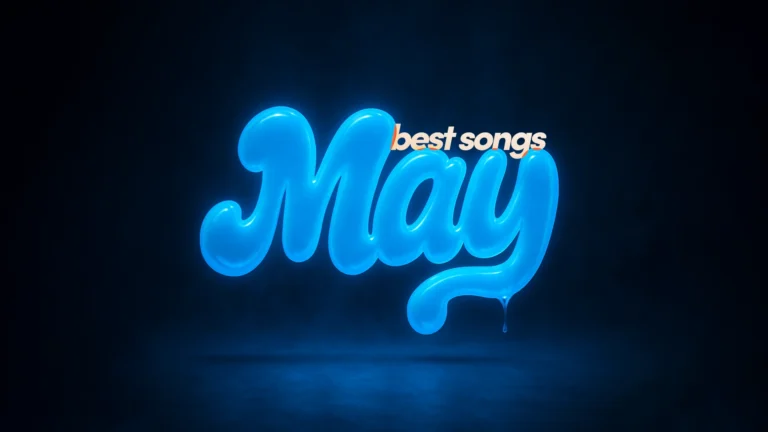



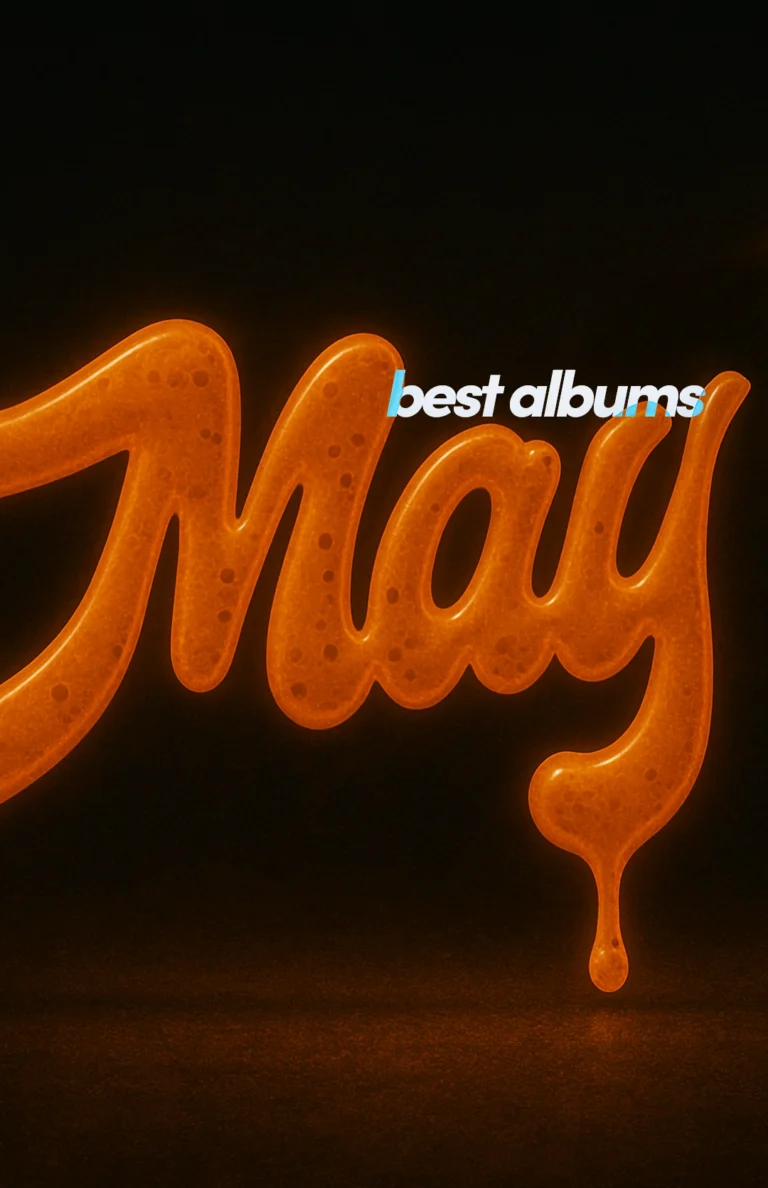
 “Everything buffering, reality lag and jump/ Sometimes barely recognize the people I love,”
“Everything buffering, reality lag and jump/ Sometimes barely recognize the people I love,” 



 “Not everything needs to even out.” The line stands out amidst the elusive tapestry of ‘Beautiful ending’, though the closer to caroline’s second album doubtlessly lives up to its titular promise. Not everything needs to resolve lyrically to make some sort of sense; not everything needs to line up musically to leave a mark on you. caroline 2 is a delightfully uneven yet meticulously crafted record, one that’s enamoured not so much with the disparateness of its parts as it is in the delicate act of stitching them together. In it you can hear empty spaces and vast stretches of time, people existing in the same room yet setting themselves adrift, bridging distances big and small. I can’t imagine not submitting yourself to its spell.
“Not everything needs to even out.” The line stands out amidst the elusive tapestry of ‘Beautiful ending’, though the closer to caroline’s second album doubtlessly lives up to its titular promise. Not everything needs to resolve lyrically to make some sort of sense; not everything needs to line up musically to leave a mark on you. caroline 2 is a delightfully uneven yet meticulously crafted record, one that’s enamoured not so much with the disparateness of its parts as it is in the delicate act of stitching them together. In it you can hear empty spaces and vast stretches of time, people existing in the same room yet setting themselves adrift, bridging distances big and small. I can’t imagine not submitting yourself to its spell. Angel
Angel 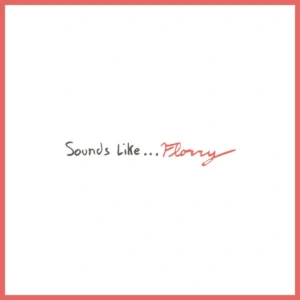 Sparks fly all over Sounds like…, Florry’s second album with Dear Life Records. It’s impossible to deny on the record’s euphorically charged, lyrically intriguing opener, ‘First it was a movie, then it was a book’, but there’s plenty of magic to be found as the Vermont-based septet loosens up on the rest of the record. Like pretty much every album coming out of Asheville’s Drop of Sun Studios, this one, co-produced with Colin Miller, sounds lived-in and magnetic. There is a rawness, at times even an explicit emptiness, in bandleader Francie Medosch’s lyrics, but it’s hardly something to stop the band dead in its tracks. “I was hoping to use this song to talk about/ Something that had been going on but I could not get it out,” she sings on ‘Dip Myself in Like an Ice Cream Cone’. Something like it, still, spills out.
Sparks fly all over Sounds like…, Florry’s second album with Dear Life Records. It’s impossible to deny on the record’s euphorically charged, lyrically intriguing opener, ‘First it was a movie, then it was a book’, but there’s plenty of magic to be found as the Vermont-based septet loosens up on the rest of the record. Like pretty much every album coming out of Asheville’s Drop of Sun Studios, this one, co-produced with Colin Miller, sounds lived-in and magnetic. There is a rawness, at times even an explicit emptiness, in bandleader Francie Medosch’s lyrics, but it’s hardly something to stop the band dead in its tracks. “I was hoping to use this song to talk about/ Something that had been going on but I could not get it out,” she sings on ‘Dip Myself in Like an Ice Cream Cone’. Something like it, still, spills out. The follow-up to 2022’s
The follow-up to 2022’s 
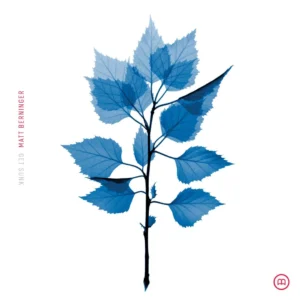 If the last time you engaged with
If the last time you engaged with  Featuring nearly the same backing band as last year’s Kabutomushi EP,
Featuring nearly the same backing band as last year’s Kabutomushi EP,  “I got caught in the teeth of the thoughts that keep me awake,” Stefan Babcock sings on ‘Paranoid’, a blistering highlight off
“I got caught in the teeth of the thoughts that keep me awake,” Stefan Babcock sings on ‘Paranoid’, a blistering highlight off  After the pandemic halted the momentum of the
After the pandemic halted the momentum of the  Up until now, Smerz records have tended to pique my interest, even amaze, then soon slipped from my mind. But Big city life, the Norwegian duo’s fuzzily glorious new album, clicked in immediately – and demanded repeated listens. Evocative of their experiences in New York and their hometown of Oslo, the record – playful and, to borrow one of the track titles, feisty – resonates on a wider scale. Catharina Stoltenberg and Henriette Motzfeldt’s eccentricity remains intact, layering one ambiguous feeling after another, but never without pulsing forward. “I’m realizing lately/ That I won’t feel like this again,” is the closing sentiment on ‘A thousand years’. Might be half-remembered, even imagined, but never anything less than real.
Up until now, Smerz records have tended to pique my interest, even amaze, then soon slipped from my mind. But Big city life, the Norwegian duo’s fuzzily glorious new album, clicked in immediately – and demanded repeated listens. Evocative of their experiences in New York and their hometown of Oslo, the record – playful and, to borrow one of the track titles, feisty – resonates on a wider scale. Catharina Stoltenberg and Henriette Motzfeldt’s eccentricity remains intact, layering one ambiguous feeling after another, but never without pulsing forward. “I’m realizing lately/ That I won’t feel like this again,” is the closing sentiment on ‘A thousand years’. Might be half-remembered, even imagined, but never anything less than real. Fifteen years may have passed since
Fifteen years may have passed since 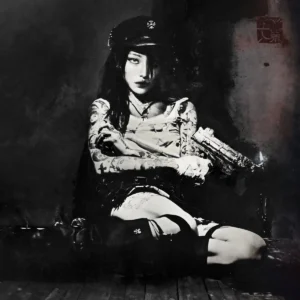 Evangelic Girl Is a Gun is billed as “an homage to the artist’s role,” but the artist being Nat Ćmiel, it is also a diffusion, fragmentation, and untethering. Their latest album as yeule continues to both explore and fracture its liminal identities while delivering one of their most plentifully catchy and euphoric records to date. In past yeule albums, those qualities yielded highlights; here, as they explore the intersection between post-humanism and pop stardom, they constitute the norm. While still trading in a mix of art-pop, alt-rock, and trip-hop, it’s the most alert yeule has sounded.
Evangelic Girl Is a Gun is billed as “an homage to the artist’s role,” but the artist being Nat Ćmiel, it is also a diffusion, fragmentation, and untethering. Their latest album as yeule continues to both explore and fracture its liminal identities while delivering one of their most plentifully catchy and euphoric records to date. In past yeule albums, those qualities yielded highlights; here, as they explore the intersection between post-humanism and pop stardom, they constitute the norm. While still trading in a mix of art-pop, alt-rock, and trip-hop, it’s the most alert yeule has sounded.




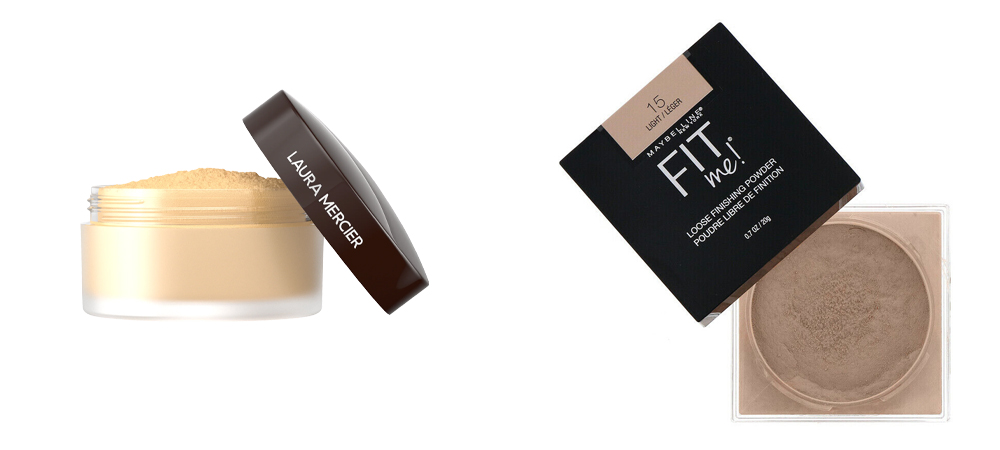


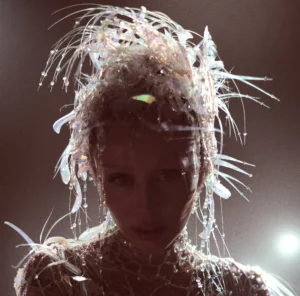 Miley Cyrus’
Miley Cyrus’  Alan Sparhawk
Alan Sparhawk Sea Lemon, the moniker of Seattle musician Natalie Lew, has unveiled her mesmerizing full-length debut,
Sea Lemon, the moniker of Seattle musician Natalie Lew, has unveiled her mesmerizing full-length debut, 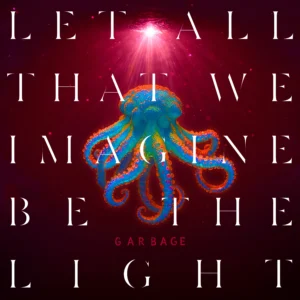 Garbage are back with a new album, Let All That We Imagine Be the Light. The follow-up to 2021’s No Gods No Masters was recorded at at Los Angeles’ Red Razor Sounds, Butch Vig’s home studio, and in singer Shirley Manson’s bedroom. “Going into making this record, I was determined to find a more hopeful, uplifting world to immerse myself in,” Manson explained in a press release. “The title of the album, Let All That We Imagine Be the Light, is the perfect descriptor for this new record as a whole. When things feel dark it feels imperative to seek out forces that are light, positive and beautiful in the world. It almost feels like a matter of life and death. A strategy for survival.”
Garbage are back with a new album, Let All That We Imagine Be the Light. The follow-up to 2021’s No Gods No Masters was recorded at at Los Angeles’ Red Razor Sounds, Butch Vig’s home studio, and in singer Shirley Manson’s bedroom. “Going into making this record, I was determined to find a more hopeful, uplifting world to immerse myself in,” Manson explained in a press release. “The title of the album, Let All That We Imagine Be the Light, is the perfect descriptor for this new record as a whole. When things feel dark it feels imperative to seek out forces that are light, positive and beautiful in the world. It almost feels like a matter of life and death. A strategy for survival.”  Ty Segall has released a new album, Possession, via
Ty Segall has released a new album, Possession, via 

